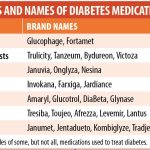
The opioid epidemic has become a significant public health crisis, with devastating consequences for individuals, families, and communities across the globe. According to the World Health Organization, an estimated 53 million people worldwide are currently using opioids, and there were over 70,000 drug overdose deaths in the United States alone in 2019. Addressing this crisis requires a multi-faceted approach, one that includes safe prescription medication use as a crucial component.
The Importance of Safe Prescription Medication Use
Prescription opioids are highly effective in managing acute and chronic pain. When used appropriately, they can significantly improve the quality of life for patients suffering from severe pain due to conditions such as cancer, post-operative recovery, or debilitating injuries. However, the misuse and abuse of prescription opioids have contributed to the alarming rise in addiction and overdose cases.
Implementing safe prescription medication use practices is essential for several reasons:
Minimizing the risk of addiction: By adhering to proper prescription guidelines, individuals can reduce the likelihood of developing an opioid use disorder.
Preventing accidental overdose: Following prescribed dosage instructions and avoiding combining opioids with other substances can help prevent unintentional overdose.
Reducing diversion: By using prescription opioids responsibly, patients can help minimize the diversion of these medications to the illicit market.
Tips for Safe Prescription Medication Use
To combat the opioid epidemic, it is crucial for patients, healthcare providers, and society as a whole to prioritize safe prescription medication use. Here are some guidelines to follow:
1. Open communication with healthcare providers
Engaging in open and honest discussions with healthcare providers is paramount. Make sure to disclose your complete medical history, current medications, and any history of substance use. This information helps healthcare professionals make informed decisions regarding medication choice and dosing.
2. Strictly follow prescribed instructions
Always follow the instructions provided by your healthcare provider. Take the prescribed dose at the recommended intervals and avoid increasing or decreasing it without consulting your doctor. Do not share your medications with others, as each person’s medical condition and tolerance may differ.
3. Educate yourself about the medication
Take the time to learn about the medication prescribed to you. Understand the potential side effects and risks associated with its use. Ask your healthcare provider questions and seek clarification whenever necessary.
4. Never mix opioids with alcohol or other drugs
Combining opioids with alcohol or other drugs can have dangerous and potentially fatal consequences. Opioids suppress the central nervous system, and mixing them with other substances can amplify their effects, leading to overdose or respiratory depression.
5. Proper storage and disposal
Store your medications in a safe and secure place, out of reach of children, family members, or visitors who may accidentally consume them. Follow proper disposal guidelines to prevent unused medication from falling into the wrong hands or being improperly disposed of, harming individuals or the environment.
6. Regularly reassess the need for opioids
If you have been using prescription opioids for a prolonged period, regularly reassess their effectiveness with your healthcare provider. Explore alternative pain management options, such as physical therapy, non-opioid pain medications, or complementary therapies, to reduce reliance on opioids.
Conclusion
The opioid epidemic continues to wreak havoc on communities worldwide, affecting millions of lives. While there is no quick fix solution, promoting safe prescription medication use is a crucial step towards combating this crisis. By following the guidelines outlined above, patients can minimize their risk of addiction and accidental overdose, while healthcare providers and society at large can work together to address this public health emergency.









